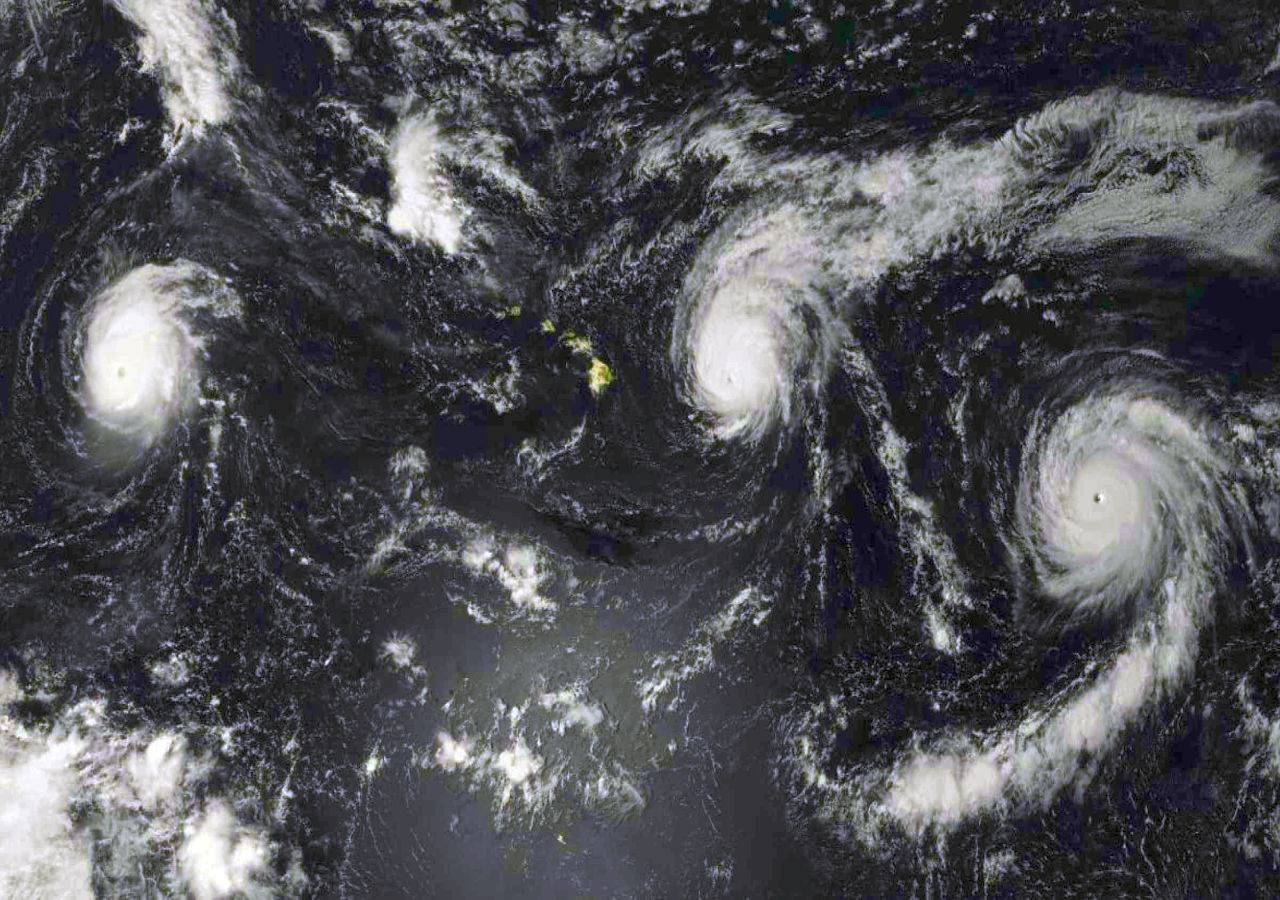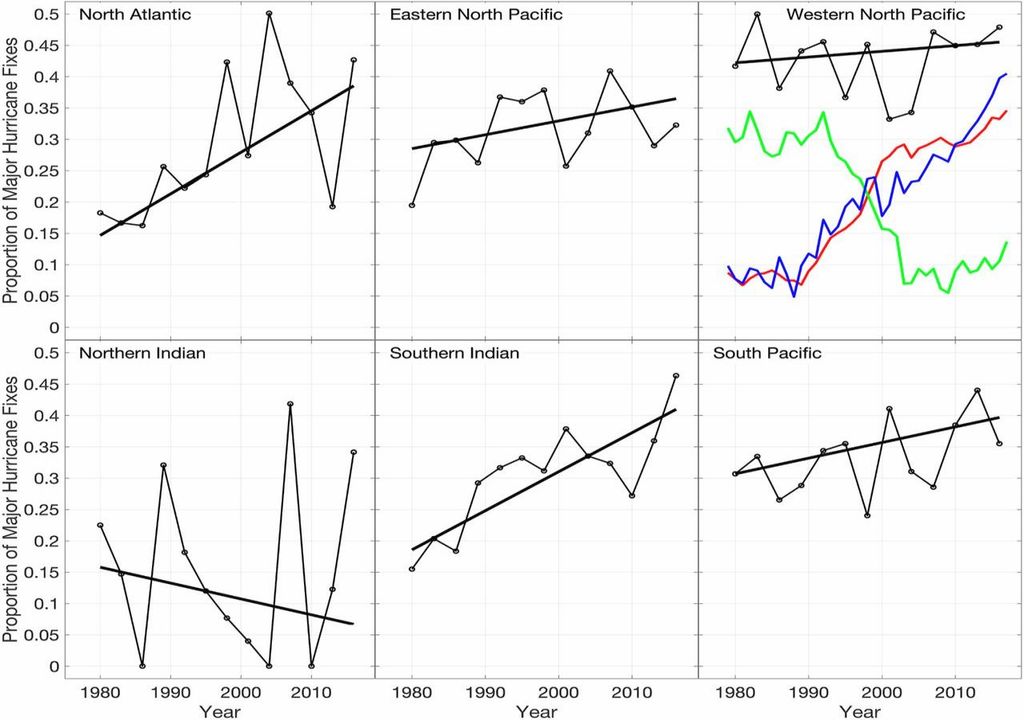A recent study finds that climate change is making hurricanes more intense

The modern study of Noah And the Cooperative Institute for Meteorological Satellite Studies (CIMSS) at the University of Wisconsin-Madison, analyzed approx 40 years of satellite images.
This study was published in Proceedings of the National Academy of Sciences (PNAS), found Significant increase in the intensity of tropical cyclones, CT, Globally during the period from 1979 to 2017.
Satellite data, such as GOES-East and GOES-West, allow us to obtain many characteristics of a tropical cyclone: infrared temperatures of the cloud tops above the eyewall, estimates of their intensity, life cycle, etc.
Recent study results: more intense hurricanes
The study found Increase in the incidence of major hurricanes (Those who have Severity class 3, 4 or 5 on the Saffir-Simpson Hurricane Wind Scale) compared to Category 1 or 2 tropical cyclones.
Between the first and last half of the 39-year data set, “there is a clear shift toward higher intensity manifested by greater probabilities of exceeding the intensity of major hurricanes.”
Researchers discovered this The probability of a tropical cyclone with Category 3 or higher winds (at least 179 km/h) increased by approximately 15% between the first and last half of the satellite data analyzed.
This corresponds to approximately an increase in 8% per contract during the study period. The proportion of all tropical cyclones that exceeded major hurricane intensity showed a similar increase of about 6% per decade.
Regional fluctuations in basins
James B. Cossin The co-authors disaggregated the data by location to address the issue Regional fluctuations around the world.
he North AtlanticAlong the hurricane-prone East Coast of the United States, showed high rates of increase in severity Of hurricanes between 1979 and 2017.
“The biggest changes are occurring in the North Atlantic, where the probability of major hurricanes exceeding the limit increases by 49% per decade“, says the study.
However, the authors note this Regional fluctuationsEspecially in the North Atlantic Ocean and due to other factors such as the Atlantic Longitudinal Circulation (AMOC), aerosols, African dust, volcanic activity, and greenhouse gases, It made it difficult to fully understand the trend. Moreover, according to the study, The magnitude and importance of trends across ocean basins varies greatly.

“Our results show that these tropical storms are becoming stronger both globally and regionally, which is consistent with expectations for how hurricanes will respond to global warming. Kosin said in a University of Wisconsin-Madison news release.
“It's a good step forward and increases our confidence that global warming has made hurricanes stronger, but our results don't tell us specifically to what extent human activities are causing these trends and to what extent they may simply be due to natural fluctuations.“.
in Study conclusions It is noted that the global density trends of the identified TCs are consistent with expectations based on understanding of the physical process and trends detected in numerical simulations under warming scenarios.
The temperature of the tropics also roseAnd sea water surface temperatures The potential density of TCs has increased In areas where TCs continue on track, this provides a prior expectation of increased TC intensity, Equal to all other factors.
This record is limited only to the period of geostationary satellites, therefore the past four decades.
reference
James B. Kosen et al., Global increase in the probability of overtaking major tropical cyclones over the past four decadesProceedings of the National Academy of Sciences2024 https://doi.org/10.1073/pnas.1920849117

“Bacon advocate. Certified creator. Twitteraholic. Tv junkie. Beer fanatic. Internet nerd. Passionate thinker. Reader.”


:quality(85)/cloudfront-us-east-1.images.arcpublishing.com/infobae/33SWZ32BWZEJFAOMZCMANWBYWY.jpg)


:quality(70)/cloudfront-us-east-1.images.arcpublishing.com/elfinanciero/RG2WDKIPKFHATC6U6JLVDYBBXU.jpg)

